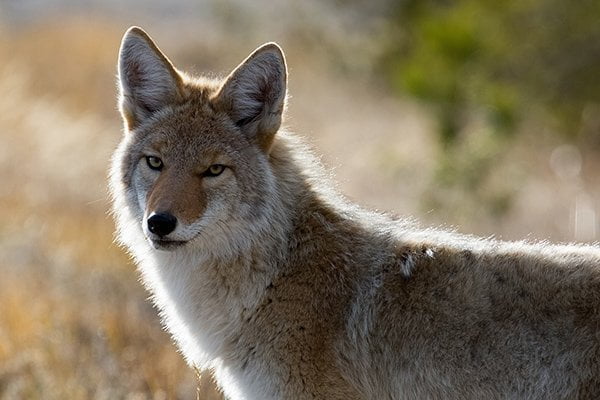One of the many desirable elements of San Diego’s natural topography is that of the close proximity to nature. These remaining precious patches or designated “greenbelts” support native flora and fauna providing critical habitat among intensive urban development.
And coyotes have long been an integral member of San Diego’s native fauna.
Here in the Clairemont area, we have the opportunity to enjoy these remaining wild places in the numerous canyons; San Clemente Canyon, Tecolote Canyon, Mt. Etna Canyon, Stevenson Canyon, Rose Canyon, Rose Creek Canyon, etc.
“Problems” arise when coyotes come into contact with our pets or livestock.

Safety, through avoiding problematic coyote interactions, should be the goal. It all starts with awareness and education.
Your CoastView Veterinary staff has put together this handy resource to help you:
- Do your part to deter coyote encounters in your neighborhood.
- Know what to do if you find yourself in an interaction situation.
- Contribute your own information to the coyote tracking database which can then be analyzed to detect pockets of high-density coyote populations.
On a day to day basis, the rise in coyote sightings and interactions is likely occurring for many reasons including:
- Decreasing natural habitats due to increasing human populations in San Diego.
- Proximity to natural habits as houses closer to canyons will have more interactions.
- Proximity to food (garbage, birds, rodents, fruit trees around houses).
- Access to backyard water sources such as pools, fountains, ponds, and birdbaths.
- Increase in backyard livestock (chickens, etc.)

Recommendations to minimize interactions:
- Discourage scavenging by ensuring no trash, fruit or food is left outside – and use trash cans with tight fitting lids.
- Discourage hunting by eliminating the desire to feed wild animals. Anything that brings rabbits, squirrels, birds, etc. into your yard will eventually bring in the natural predators to hunt the smaller animals. Think it through and talk with your neighbors.
- Fence your yard with walls at least 6 feet high and bury rocks under the fence to discourage digging.
- Trim low-lying bushes on a regular basis.
- If you have backyard livestock, ensure they are in a protected enclosed area.
- Spay your dogs because a female in heat produces a strong scent which can attract coyotes.
- Don’t leave your fur family members outside without supervision.
Suggestions to help prevent injuries if interactions occur:
- Coyote vest – coyotevest.com
- Far reaching Pepper Spray or Bear Repellant. www.sabrered.com/pepper-spray/tactical-pepper-gel-flip-top-belt-holster
- Noise aversion by either yelling or using an aversive noise.
- Carry a sturdy walking stick.
- Use any stick or projectile object in your immediate proximity to throw at the coyote.
- Continue to vocalize and try to scare the coyote away even if they stop and look from a distance.
- Don’t run from the coyote. You may have to get louder, move closer, and try to make yourself seem bigger until they run away.
- Keep a water hose readily available in your backyard in case you need to use water to deter a coyote once it is in your yard.
- Review the “Coyote Hazing” guidelines from Project Wildlife for additional information on how to alter the coyote’s behavior to be less likely to return to your area. sdhumane.org/programs/project-wildlife/downloads/hazing.pdf
How to report your sightings:
If you see or have an interaction with a coyote, please record this incident with the University of California as they are tracking sightings and interactions.








